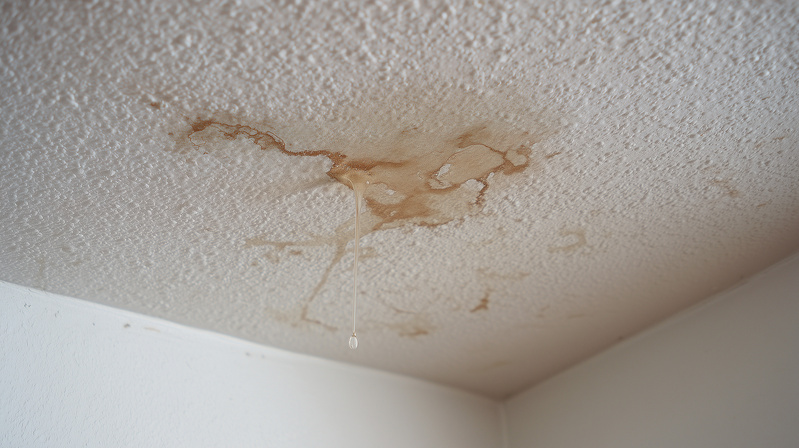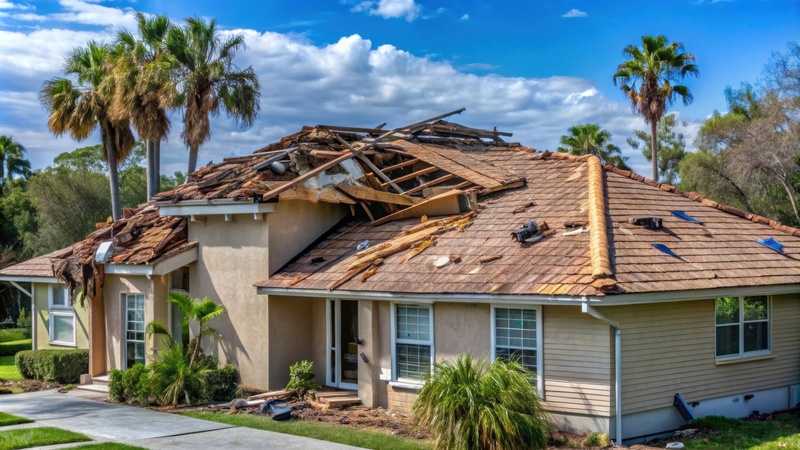Choosing between TPO and EPDM for your flat roofing system is a high-stakes call that can impact your building’s resistance to heat, wind, and water for decades. At Galloway Roofing, we help Englewood property owners navigate these options with a focus on proper installation, Florida code compliance, and long-term durability.
Below, we explain the most important factors in the TPO versus EPDM decision, based on real-world performance in Southwest Florida’s climate.
Key Takeaways
- TPO roofing reflects sunlight and stays cooler, while EPDM absorbs heat and needs coating to lower rooftop temperatures.
- TPO seams hold stronger against storms because they are heat-welded, while EPDM seams weaken from heat and moisture.
- Florida codes favor TPO for high-wind zones, while EPDM may need ballast or upgrades to meet requirements.
- TPO lasts longer with less repair in coastal areas, while EPDM may cost more over time in maintenance.
1. UV Resistance and Energy Efficiency in Coastal Zones
In hot and sunny Englewood, UV resistance is critical.
TPO roofing—short for thermoplastic polyolefin—reflects solar radiation to reduce rooftop temperatures and increase energy efficiency. Its UV-blocking properties can make a measurable difference on your cooling bills, especially near beach areas like Venice and Boca Grande.
EPDM, made from ethylene propylene diene monomer, absorbs more heat due to its dark color. While coatings can help, they add to the cost and maintenance.
For property owners looking to keep square foot cooling costs low, TPO membranes offer a built-in advantage.
2. Seam Construction and Water Resistance
TPO roofing systems use heat-welded seams, which create a monolithic waterproof surface. This approach dramatically reduces penetrations and the risk of cracks or water intrusion.
EPDM roofing membranes, by comparison, rely on bonding adhesives and have more seams per square foot. These seams can weaken under thermal stress—especially during seasonal swings between February’s cold snaps and the summer heat.
When fewer seams and puncture resistance matter, TPO tends to outperform, particularly in hurricane-prone counties like Sarasota and Charlotte.
3. Installation Methods and Florida Building Codes
EPDM roofs tend to be faster to install, especially when using ballasted systems with gravel or mechanically attached techniques. However, poor installation or insufficient fastening can cause problems under high wind loads.
That’s why building in areas like Punta Gorda or Dearborn Street often calls for fully adhered or mechanically attached TPO roofing systems. These options use stronger fasteners and flashing integration to meet strict Florida wind uplift standards.
Local regulations favor roofing systems that withstand coastal weather without compromising insulation or waterproofing integrity.
4. Material Differences and Long-Term Durability
Both EPDM and TPO are single-ply roofing membranes with varying material thicknesses.
EPDM roofs tend to be more flexible, which helps resist shrinkage, but they can be less resistant to punctures or foot traffic. TPO, with its reinforced scrim and wider sheets, provides better puncture resistance and is highly durable against physical stress.
On commercial buildings with rooftop equipment or walkways, TPO roofing is generally preferred for its durability and fewer repair needs.
In our experience across the roofing industry, longevity depends not only on the membrane but also on installation quality and maintenance practices.
5. Lifespan and Maintenance in Southwest Florida
EPDM roofing systems can last 20–30 years in milder climates, but in high-UV, high-moisture environments like Englewood, their lifespan may shorten without proactive maintenance. TPO systems typically last 20–25 years with fewer maintenance issues and better chemical resistance.
Both require periodic roof inspection, especially around flashings, seams, and rooftop penetrations. If you’re in a high-salt community or near waterways where fish and wildlife create added environmental stress, choose a membrane that’s resistant to deterioration over time.
At Galloway Roofing, we back our systems with a lifetime workmanship guarantee for peace of mind.
6. Cost Factors and Insurance Incentives
Roof installation cost varies depending on the system type, material thickness, and whether additional enhancements—like concrete pavers—are needed to meet wind load compliance.
While EPDM may appear more budget-friendly at first, it can cost more in roof maintenance over time. TPO’s energy savings and insurance incentives for wind mitigation often offset its higher upfront cost.
Properties in construction zones with higher exposure—such as buildings near Englewood Beach or busy commercial districts—benefit from systems that offer proven resilience and fewer roof repair needs over the long term.
7. Choosing for Your Location and Property Type
Every geographical location in Florida comes with its own challenges.
Whether you’re managing a commercial warehouse, a multi-family building, or a beachfront property, the factors influencing roof choice—like installation technique, UV exposure, fasteners, gravel load, insulation strategy, and code adherence—should all guide your decision.
Both EPDM and TPO are capable, but only when matched to the right application and installed by experienced local contractors.
Galloway Roofing specializes in systems designed to withstand Florida’s unique blend of heat, humidity, and high winds.
TPO Roofing vs. EPDM Roofing: Which Flat Roof Wins for Florida?
If you’re weighing the pros and cons of TPO versus EPDM after reviewing the details, this side-by-side summary brings it all together.
Here’s how both roofing systems stack up in the key areas that matter most.
| Category | TPO Roofing | EPDM Roofing |
| UV & Heat | Reflects UV rays; reduces cooling loads—ideal for coastal Florida | Absorbs heat; coatings improve performance but add upkeep |
| Energy Efficiency | High; lowers square foot cooling costs in sun-exposed zones | Moderate; less efficient unless coated or upgraded |
| Seam Integrity | Heat-welded seams are watertight and storm-ready | Bonded seams prone to thermal stress and cracking |
| Installation & Code | Fully adhered or mechanically attached meets Florida wind codes | Faster install, but often needs ballast or pavers to pass inspection |
| Durability | Puncture-resistant, fewer seams, wider sheets—built for traffic and storms | Flexible but more vulnerable to punctures and shrinkage in heat |
| Lifespan & Maintenance | 20–25 years with low maintenance in high-salt, high-UV areas | 20–30 years in mild climates; shorter life in Englewood conditions |
| Cost & Insurance | Higher upfront, but energy savings and mitigation credits offset costs | Cheaper initially, but long-term maintenance may exceed TPO costs |
Schedule a Flat Roof Evaluation with Galloway Roofing
Whether you’re prepping your flat roof for November’s rain or checking its condition after a long summer of heat and visitors, don’t guess.
Call us at (941) 697-3737 for a free estimate.
At Galloway Roofing, we serve the full Southwest Florida community and offer professional guidance, proper installation, and no-pressure inspections to help you make the right decision for your commercial roofing needs.
Frequently Asked Questions
What happens if tree limbs or debris puncture my TPO or EPDM roof?
Roof punctures can lead to fast water damage. We offer emergency roof tarping and follow-up repairs to protect your property and restore full waterproofing quickly and professionally.
Can TPO or EPDM be installed over an existing roof?
In some cases, yes. Galloway Roofing inspects your current roof for moisture, damage, and code compliance before recommending an overlay or full replacement.
Is either system a good fit for buildings with rooftop solar panels?
TPO is often preferred for solar setups because it resists punctures. We coordinate with your installer to seal penetrations and maintain warranty protection.
Are single-ply membranes suitable for steep-slope roofs or just flat ones?
Single-ply roofing works best on flat or low-slope roofs. For steep-slope structures, we recommend shingles or tile based on local exposure and durability needs.






